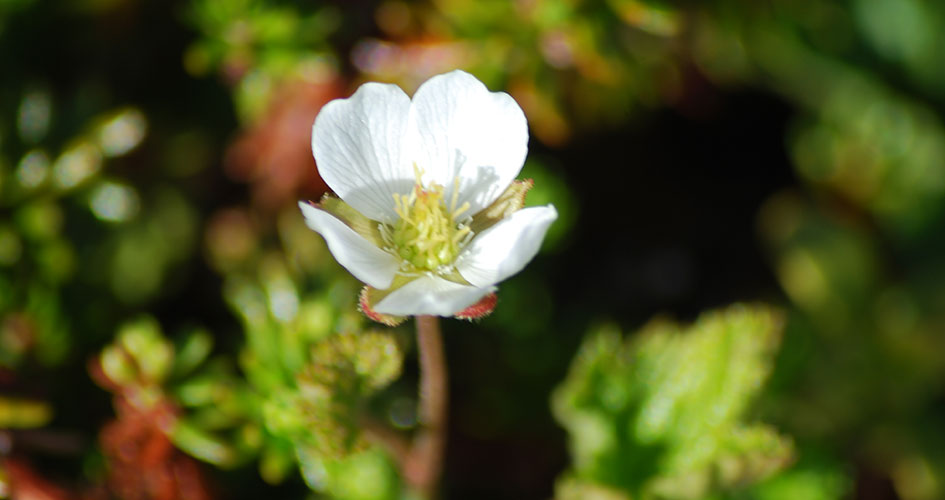 Foto: Länsstyrelsen Norrbotten
Foto: Länsstyrelsen NorrbottenPlant life
Pieljekaise is the national park of mountain birch forests. Mountain birch forests cover two thirds of the national park, climbing to a height of 800 metres above sea level.
Only in Scandinavia do mountain birches form the tree line where forest ends and bare mountainside begins. In other mountainous areas coniferous trees often play that role.
Attacks on mountain birches
A special trait of the mountain birch is its susceptibility to attacks from larvae of autumnal moths, which now and then denude the forest. You might see deadwood as a trace of that during your visit. But usually the birch roots survive and the trees put out new shoots, to the joy of grouse and elk, which gladly devour birch twigs. It’s a natural way for the mountain birch to form new, young stands.
The globeflower, a characteristic plant
The globeflower (Trollius europaeus) is the national park’s characteristic species in both the mountain birch forest and in the meadows above the tree line. Crane’s-bills also bloom profusely in early summer. Later in the summer alpine blue-sow-thistle, monk's-hood, garden angelica and melancholy thistle begin.
Share with your friends
Share this page with your friends on Facebook, X (formerly Twitter), Google+ and e-mail.





